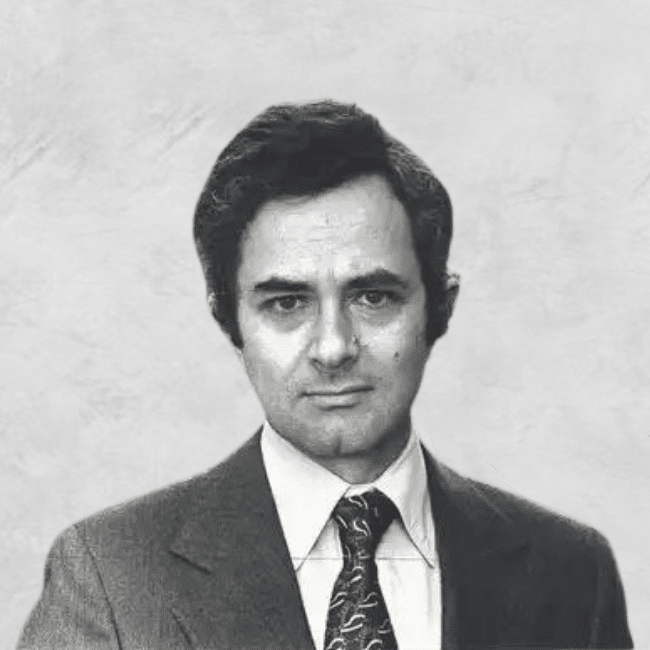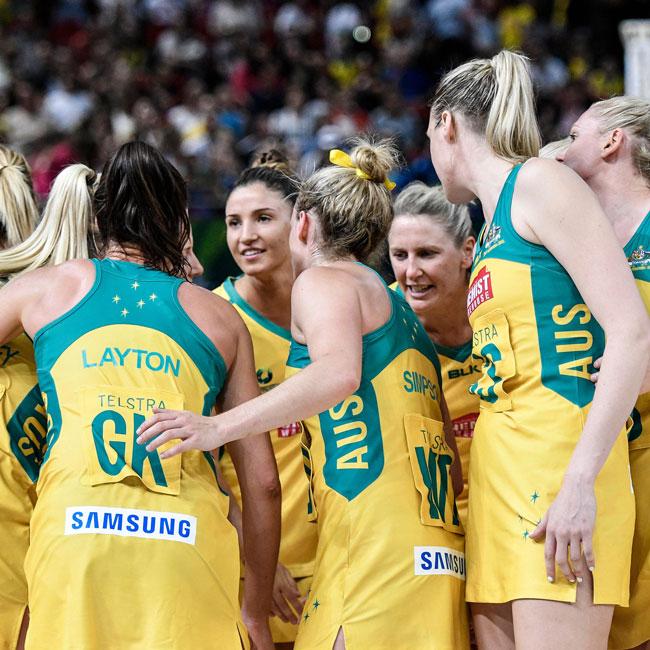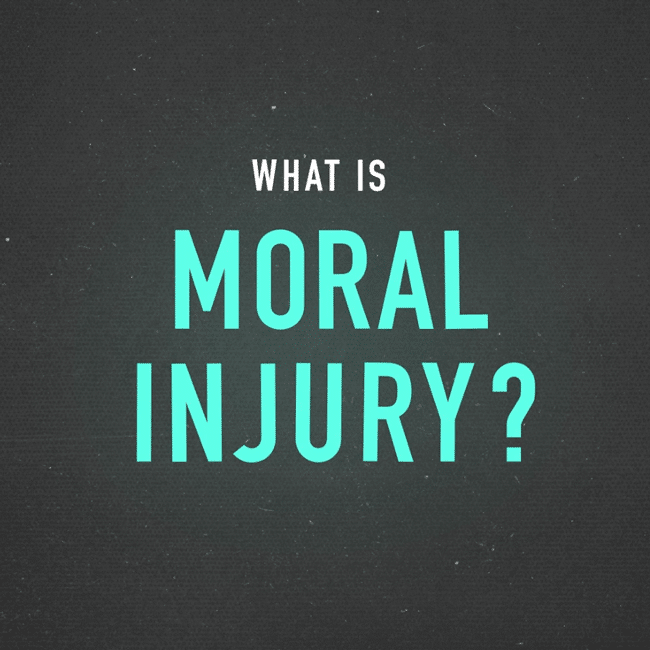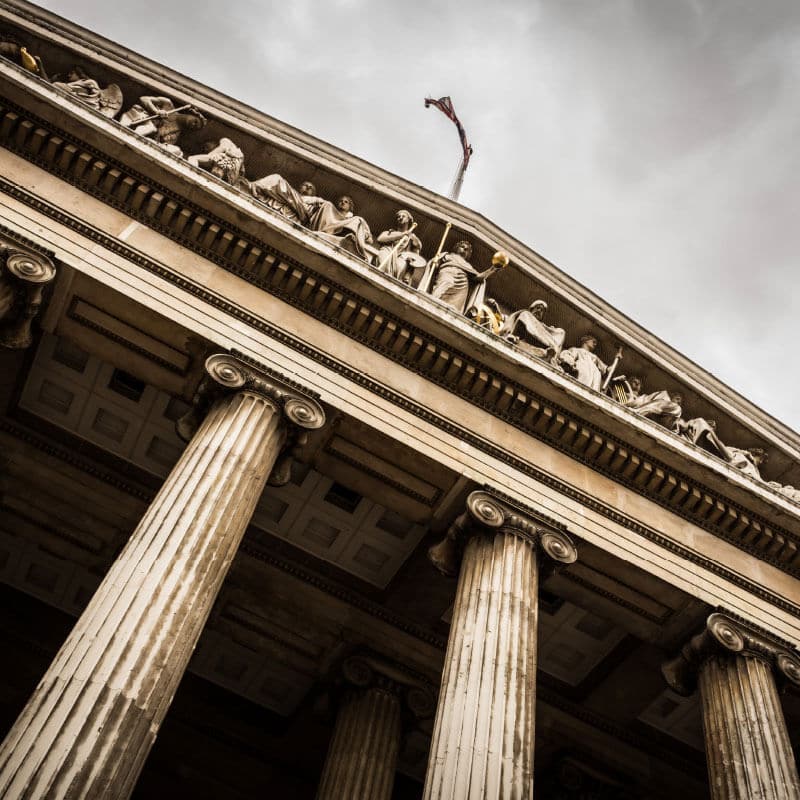How to improve your organisation’s ethical decision-making

How to improve your organisation’s ethical decision-making
Opinion + AnalysisBusiness + Leadership
BY The Ethics Centre 4 OCT 2022
Are you confident in your organisation’s ability to negotiate difficult ethical terrain? The Ethics Centre’s Decision Lab is a robust process that can help expand your ethical decision-making capability.
Imagine you run a not-for-profit that helps people experiencing problem gambling. You are approached by a high-net-worth individual connected to the gambling industry who is interested in making a substantial donation to your organisation. Funding is always hard to come by and you know you could reach many more people in need with this money. Do you accept the donation?
Or imagine you are the CEO of a publicly listed consulting firm that is deciding whether to take on a new client in the fossil fuel industry. You suspect it would be unpopular with younger members of your staff and some of your other clients, but it’s a very lucrative contract and it would significantly boost your bottom line ahead of reporting season. Do you take on the client?
What if you sat on the board of a major corporation that is planning to make a public statement urging the government to adopt a new progressive social policy. The proposed policy does not impact your business directly, but a majority of your staff support it. However, you personally have misgivings about the policy and suspect some other employees do as well. Do you put your name on the public statement?
What would you do in each of these situations? If you do have an answer, could you explain how you arrived at your decision? Could you defend it in public? Could you defend it on the front page of the newspaper?
Dealing with ethically-charged situations like these is never easy. Not only do our decisions have a material impact on multiple stakeholders, but we also need to be able to communicate and justify them. This is complicated by the fact that many of the influences on our ethical decision-making are implicit, meaning we risk making decisions based on unexamined values or we might struggle to explain how we arrived at a particular conclusion.
This is why The Ethics Centre has developed Decision Lab, a comprehensive ethical decision-making toolkit that surfaces the implicit elements in ethical decision-making and provides a robust process to navigate the ethical dimensions of critical decisions for organisations big and small.
Decision Lab
The Decision Lab process begins by clarifying the organisation’s core purpose, values and principles. The purpose includes the organisation’s overall mission, which is what it is aiming to achieve, and its vision, which is what the world looks like when it has achieved it. The values are what the organisation believes to be good and the principles are the guiderails that guide decision-making.
Even organisations that have published mission statements and codes of conduct will find that employees will have different understandings of purpose, values and principles, and these differences can influence ethical decision-making in a profound way. By bringing these perspectives to the surface, the Decision Lab process enables the diversity to be recognised and engaged with constructively rather than leaving it implicit and having different individuals pulling in different directions.
The Decision Lab also explores the process of decision-making, testing critical assumptions and taking multiple perspectives into account to ensure no key elements are overlooked. Take the hypothetical above about the not-for-profit. It would be easy to focus on the issue of whether it is hypocritical to accept money from those associated with gambling in order to fight problem gambling. But it is also crucial to consider the impact on other stakeholders, such as the beneficiaries of the not-for-profit’s services, their families and communities, or consider whether the perception of hypocrisy might affect future fundraising.
Shadow values
The process also acknowledges common biases and influences that can derail decision-making. A common one is the organisation’s Shadow Values which are the hidden uncodified norms and expectations promoted often out of awareness that can influence how the entire organisation operates. For example, many organisations explicitly subscribe to values such as integrity, but the shadow values might promote loyalty, which could prevent an employee from calling out a senior manager who is misrepresenting the work being done for a client.
The Decision Lab then provides a checklist for decisions that can be used as a ‘no regrets test,’ ensuring that all relevant elements have been considered. For example, should the consulting firm reject the contract with the fossil fuel company, it could suffer a backlash from shareholders, who argue that the board has a responsibility to create value for shareholders within the law rather than pursue political agendas. The Decision Lab checklist would ensure that such eventualities are considered before the decision was made.
The decision-making process is then stress tested against a variety of hypothetical scenarios, such as those above, that are tailored to the organisation’s mission and circumstances. This allows participants to put ethical decision-making into practice, engage in constructive deliberation and learn how to evaluate options and develop implementation plans as a team.
On completion of the Decision Lab, The Ethics Centre provides a customised decision-making framework that is tailored to the organisation and its needs for future reference.
Open book
The Decision Lab is a powerful and practical tool for any organisation looking to improve its ethical decision-making. It also has other benefits, such as increases awareness of the lived organisational culture, including the beliefs, attitudes and practices shared amongst its people. It identifies how the current culture and systems are enabling or constraining the realisation of the organisation’s goals.
By unifying employees around a common purpose and encouraging values-aligned behaviour, it ensures that the entire organisation is working as a unit towards a shared vision. The deliberative process also helps to build a climate of trust within the organisation, which aids in avoiding and resolving conflicts, as well as promoting good decision-making.
Individuals and organisations are constantly making decisions that have wide-reaching impacts. The question is: are you doing it well? The Decision Lab can ensure that your organisation’s decision-making is done in an open, robust and constructive manner, producing more ethical decisions and contributing to a positive work culture.
The Ethics Centre is a thought leader in assessing organisational cultural health and building leadership capability to make good ethical decisions. To arrange a confidential conversation contact the team at consulting@ethics.org.au. Or visit our consulting page to learn more.
Ethics in your inbox.
Get the latest inspiration, intelligence, events & more.
By signing up you agree to our privacy policy
You might be interested in…
Opinion + Analysis
Business + Leadership
Taking the bias out of recruitment
Opinion + Analysis
Business + Leadership, Relationships
So your boss installed CCTV cameras
Opinion + Analysis
Business + Leadership
New framework for trust and legitimacy
Opinion + Analysis
Business + Leadership
Leaders, be the change you want to see.
BY The Ethics Centre
The Ethics Centre is a not-for-profit organisation developing innovative programs, services and experiences, designed to bring ethics to the centre of professional and personal life.
We are on the cusp of a brilliant future, only if we choose to embrace it

We are on the cusp of a brilliant future, only if we choose to embrace it
Opinion + AnalysisBusiness + LeadershipPolitics + Human Rights
BY Simon Longstaff 22 JUN 2022
Speaking a couple of days after the 2022 Federal Election, renowned Australian journalist, Stan Grant, noted that although the election of the Albanese government had been a moment of national ‘catharsis’, it was more difficult to discern in the result a commitment to a clear, positive direction for the nation. In that sense, the future shape of Australia remained an ‘open question’.
This was not to deny that the Australian electorate seemed to express, through their vote, a few clear preferences: an end to the debilitating ‘climate wars’, higher standards of integrity in federal politics and more generally, a preference for a more diverse and inclusive form of representation in our national parliament and government.
There is every reason to believe that these expectations will be met. Indeed, one might be encouraged to hope for something more. For example, it was remarkable that the first utterance of Prime Minister Albanese, on claiming victory, was to promise a referendum to enshrine in the Constitution an Indigenous ‘Voice to Parliament’ as called for in the Uluru Statement From The Heart. The surprise in this was that this issue had barely been mentioned during the election campaign – yet had clearly loomed large in the mind of the new PM.
So, what else might we aim to achieve as a democratic nation endowed with the most fortuitous circumstances of any nation on earth? Yes, despite the current ‘doom and gloom’, we are on the cusp of a truly brilliant future – if only we choose to embrace it.
We have everything any society could need: vast natural resources, abundant clean energy and an unrivalled repository of wisdom held in trust by the world’s oldest continuous culture supplemented by a richly diverse people drawn from every corner of the planet. However, whether this future can be grasped depends not on our natural resources, our financial capital, or our technical nous. The ultimate determinant lies in our character.
Three forces can shatter our path to prosperity. First, enemies from without who seek to exploit our grievances and divide our nation into warring factions. Second, a collective fear of the unknown and a lack of trust in those who would lead us there. Third, a lingering, persistent doubt about the legitimacy of a society that violently dispossessed the first peoples of our continent.
Each of these threats can be neutralised – if only we have the collective will and the courage to do so. With this in mind, I have outlined below a set of core, national objectives that I think would secure the endorsement of a vast majority of Australians. It is the realisation of these objectives that will unlock the brilliant future that is available to all Australians.
In five years, we can fashion a society that is at ease with itself and its place in the world. We can have sown the seeds out of which will grow a universal sense of belonging – a gift bestowed by First Nations people who have only ever asked for respect, truth and justice. That sense of unfettered connection, informed by an Indigenous understanding of country that has grown over time immemorial, will be the glue that binds us into one people of many parts. Once established and reinforced, nothing will dissolve that bond.
In five years, we can grow the confidence to embrace radical change – confident that no individual or group will be asked to bear a disproportionate burden while others take an unfair share of the gains. Our commitment to a broadly egalitarian society will move from myth to reality. While we may not all rise to equal heights, no one will be left to fall into the depths of neglect or obscurity. This will allow us to be brave, to take risks and to harvest the rewards of doing so.
In five years, we can be better led. Confidence can be restored in our governments – that they will truly honour their democratic obligation to act solely in the public interest – whether in their use of public resources or in the policies and practices they adopt.
In five years, the aged, the sick and infirm should be cared for by a workforce who are properly valued and rewarded for their support of the most vulnerable.
In five years, all Australians should have a genuine opportunity to make a home for themselves in affordable, secure accommodation.
In five years, everyone should feel more safe and secure in their homes, their workplaces, their cities and towns.
In five years, a confident Australia can build and reinforce enduring alliances with nations who share our desire to live in a just and orderly world free from the heavy yoke of authoritarian governments.
All of this is possible. For the most part our physical and technical infrastructure is world class. Our ethical infrastructure could be better. We need to invest in this area – confident that in doing so we will unlock both social and economic benefits of staggering proportions. As Deloitte Access Economics has estimated, a mere 10% increase in the level of ethics in Australia would lead to an increase in GDP of $45B (yes, billion) every year – not through some kind of ‘magical effect’ but as a direct consequence of the increased trust that better ethics would create.
Do this and we can embrace the brilliant future that beckons us.
With your support, The Ethics Centre can continue to be the leading, independent advocate for bringing ethics to the centre of life in Australia. Click here to make a tax deductible donation today.
Ethics in your inbox.
Get the latest inspiration, intelligence, events & more.
By signing up you agree to our privacy policy
You might be interested in…
Opinion + Analysis
Politics + Human Rights
Orphanage ‘voluntourism’ makes school students complicit in abuse
Opinion + Analysis
Politics + Human Rights, Relationships
Ask an ethicist: do teachers have the right to object to returning to school?
Reports
Business + Leadership
Productivity and Ethics
Opinion + Analysis
Politics + Human Rights, Society + Culture
Making sense of our moral politics
BY Simon Longstaff
Simon Longstaff began his working life on Groote Eylandt in the Northern Territory of Australia. He is proud of his kinship ties to the Anindilyakwa people. After a period studying law in Sydney and teaching in Tasmania, he pursued postgraduate studies as a Member of Magdalene College, Cambridge. In 1991, Simon commenced his work as the first Executive Director of The Ethics Centre. In 2013, he was made an officer of the Order of Australia (AO) for “distinguished service to the community through the promotion of ethical standards in governance and business, to improving corporate responsibility, and to philosophy.” Simon is an Adjunct Professor of the Australian Graduate School of Management at UNSW, a Fellow of CPA Australia, the Royal Society of NSW and the Australian Risk Policy Institute.
Let the sunshine in: The pitfalls of radical transparency

Let the sunshine in: The pitfalls of radical transparency
Opinion + AnalysisBusiness + Leadership
BY Dr Tim Dean 3 MAY 2022
“Sunlight is said to be the best of disinfectants.” So wrote United States Supreme Court Justice Louis Brandeis, in his 1914 book critical of the concentration of power in banks and financial institutions, Other People’s Money and How the Bankers Use It.
Over a century later, sunlight is experiencing a resurgence in popularity as a disinfectant through the concept of radical transparency. This movement towards greater transparency is increasingly being adopted by a wide range of businesses from the technology, legal and environmental sectors as well as the banking and finance sector that motivated Brandeis’ book.
The movement has received a surge of attention in recent years due to policies promoted by pioneers like Ray Dalio, the founder of asset management firm Bridgewater Associates. Dalio sought to improve decision making by encouraging all employees to express their opinions freely about all aspects of the business, creating what he calls an “idea meritocracy”, where the best ideas rise to the surface.
Other pioneers include the US media streaming company, Netflix, and Finnish software consultancy, Reaktor, both of which have implemented wide ranging radical transparency policies covering everything from wage transparency to radical candour in internal communications to releasing employee emails to the public.
And the idea is growing in its appeal. The 2018 Future of Work Study, commissioned by online communications platform Slack, found that “80% of workers want to know more about how decisions are made in their organization and 87% want their future company to be transparent”.
However, there’s no single definition or implementation of radical transparency and it is employed in different ways in different contexts, and each has its own ethical implications.
The virtue of openness
In its broadest sense, transparency simply means openness, especially when it comes to revealing and sharing information. What makes it “radical” is when information that was previously closely guarded is systematically opened up to a wider audience, whether that’s within the organisation or without.
The primary ethical virtues of radical transparency are that it improves accountability and prevents corruption, in the sense of the improper use of power.
A culture of radical transparency not only makes it harder to conceal wrongdoing or compromising information, it also encourages a greater sense of honesty in dealings with others because of the anticipation that all information about those dealings will be revealed.
Radical transparency can also help counteract some of the power dynamics that influence decision making within organisations, whereby individuals might be reluctant to challenge the ideas and opinions of their leaders. A culture of radical transparency can improve decision making, as is claimed by Bridgewater, but also encourage people to speak up if they see something they believe is inappropriate.
Another form is wage transparency, which can promote fairness by giving employees more bargaining power in negotiations, placing them on a more even informational playing field with the employers. This is especially beneficial for those who are less inclined towards aggressive negotiation and can help counteract biases based on gender, racialisation and disability.
In an environment where trust in institutions, government and business is increasingly strained, radical transparency directed towards the public can serve to rebuild some of that trust. More organisations are laying bare information such as their employee diversity data, the results of internal or independent reviews – such as conducted by The Ethics Centre on behalf of the Australian Olympic Committee in 2017 – or details of their supply chains and environmental record.
Virtues and vices
Openness is a virtue. However, as Aristotle pointed out, any virtue taken to extreme can become a vice, and pushing transparency into “radical” territory steers it towards several ethical pitfalls and trade-offs that can easily be overlooked.
For a start, transparency sits in natural tension with privacy. Privacy is not just about restricting access to information but it can be thought of as the right of each individual to exercise some control over their personal information. This means they should have some power to choose whether or not to reveal their personal information. Some examples of radical transparency, such as wage transparency or the sharing of internal emails, can violate that right to privacy.
Privacy also enables us to protect ourselves from those who might use our personal information in bad faith to exclude, discriminate or persecute us. Radical transparency risks bleeding over into the personal space, such as if health, sexuality or religious attitudes are revealed that have no bearing on someone’s professional performance but which could expose them to unjust persecution.
One of the goals of radical transparency is to promote trust, but ironically it can also work to undermine it.
There are many kinds of special trusted relationships that are dependent on privacy, such as the relationship between patient and doctor or priest and parishioner. Should these conversations be made open, many people would end up concealing information for fear that it would be made public.
While no-one is suggesting radical transparency in the doctor’s surgery quite yet, it underscores that transparency in inappropriate contexts can actually cause people to suppress information rather than share it. There is already evidence that some workers in radically transparent workplaces change their behaviour to conceal information from their peers and act in a performative way that will be seen in a favourable light by others even if it’s not productive.
Trust in others is something that is learnt and must be cultivated through experience and practice. Should radical transparency seek to make trust redundant by making all information public, there is a risk that the virtue of trust will atrophy. This represents a real ethical risk should those individuals return to a less transparent environment where the virtue of trust is required once again.
Respectfully disagree
Radical transparency also requires an organisation to establish appropriate norms and culture in order to execute it in a safe and non-toxic way. In many instances, we modulate how we speak, how honest we are and what information we share on the basis of the relationships we have and the respect we owe to the other parties. In many contexts, deference, sensitivity or an ethic of care – or just the norms of good manners – trump candour, such as when we are speaking to a senior or vulnerable individual.
If we have implicit norms that promote deference to senior management, for example, or that encourage us to be sensitive towards a colleague who has just lost their job, these can come into conflict with the norms of radical transparency. There are accounts of employees feeling tremendous awkwardness when they’re thrust into radically transparent meetings where they’re expected to criticise managers or give reasons why a colleague should be fired.
It can take considerable time and effort to change the norms of discourse within the workplace to enable something like Dalio’s “meritocracy of ideas” in a way that is not overly confronting, where people feel like disagreement is tantamount to a personal attack.
These norms require that people feel respected, secure and safe to speak, which can also be threatened if radical transparency is executed poorly.
If implemented in a targeted and systemic way, radical transparency can deliver considerable ethical benefits in terms of elevating trust, improving decision making and encouraging constructive disagreement. But the most radical and hasty implementations carry serious ethical risks. Arguably, the point of the radical transparency movement is not to continually drive towards ever greater levels of transparency in every domain but to make openness an ethical norm that is, itself, no longer radical.
Ethics in your inbox.
Get the latest inspiration, intelligence, events & more.
By signing up you agree to our privacy policy
You might be interested in…
Opinion + Analysis
Business + Leadership
Is there such a thing as ethical investing?
Big thinker
Business + Leadership
Big Thinker: Karl Marx
Opinion + Analysis
Business + Leadership, Relationships
There’s no good reason to keep women off the front lines
Opinion + Analysis
Business + Leadership, Relationships
Unconscious bias: we’re blind to our own prejudice
BY Dr Tim Dean
Dr Tim Dean is Philosopher in Residence at The Ethics Centre and author of How We Became Human: And Why We Need to Change.
Game, set and match: 5 principles for leading and living the game of life

Game, set and match: 5 principles for leading and living the game of life
Opinion + AnalysisBusiness + LeadershipRelationships
BY John Neil 28 MAR 2022
Ash Barty’s shock retirement from tennis while seemingly at the peak of her powers left the sporting world reeling.
But from all accounts it was no surprise to those close to her. From what we’ve learnt about her throughout her career, and especially through her retirement announcement, the lack of surprise from those close to her is a testament to Barty’s principles of leadership.
In times of uncertainty and unpredictability we often look to our folk heroes to provide guidance and inspiration. However, all too often we default to sportspeople as the exemplars for lessons in how to live, cherry picking attributes of heroism and resilience on the field of play only to find our heroes’ winning lustre tarnished when the invariable accounts of various misdeeds or behaviours kept private between teammates invariably surface.
Exemplary people play a key role in the branch of ethics known as virtue ethics. Its head coach, Ancient Greek philosopher Aristotle, gave exemplars a starting guernsey in his philosophical line up because they are people who can practically demonstrate to others how to live a life well. For Aristotle, ethics is not simply a matter of internalising a rule; but is about doing the right thing at the right time, in the right way and for the right reason. Moral exemplars help show us the way.
Both on and off the court, Ash Barty is a moral exemplar in the full sense of Aristotle’s term. In her humility, good will and clear-eyed purpose that she demonstrated in her retirement announcement, we can see five fundamental principles for how to lead in our work, and how to live a life inspired by someone worth emulating.
1. Relationships are an ends, not merely a means
Throughout her career Barty was consistently clear how highly she valued relationships; not because they helped her achieve sporting success, but because they were important in and for themselves. They were a foundation for her to live a flourishing life, on and off the court.
Her opening exchange in her interview announcing her retirement with good friend Casey Dellacqua, spoke volumes for the power of relationships and friendships in particular. The refreshingly genuine and heartfelt connection that began the exchange with her good friend, who thanked Barty for ‘trusting me again’ to break the news was as refreshing as it was surprising. Less surprising when we remember that Barty, in a sport notorious for its individualism, referred continuously throughout her career and especially in winning, to the central role of her team, family, friends and community played in it – just as she did in her retirement announcement.
As all great leaders do, Barty skilfully and genuinely removed herself from the centre wherever possible – no mean feat in an individualistic sport like tennis. Relationships for Barty, as they are for the best leaders, are of intrinsic value in themselves. They are not a means to achieve an outcome, they are an end in themselves.
And no doubt just as they helped Barty get the best out of herself, she, in turn, enabled the best in the team around her.
2. Leave it all out there – but don’t lose yourself in the process
On the surface Barty lived the cliched sporting principle ‘leave it all out on the field.’ From her epic Wimbledon title win after coming back early from a serious hip injury to reach the final and then holding off Karolina Pliskovain in a four-set thriller through to her epic Australian Open win – which is now all the more astonishing now we know she was running on empty – she demonstrated the drive to give it her all.
However, the adage to ‘leave it all out there’ alone lacks a second balancing criterion, which any leader who has faced the invariable burnout that comes from shouldering the often self-imposed burden of trying to meet a heroic leadership ideal knows too well from harsh experience: ‘Don’t lose yourself in the process.’
Good leaders will extend as much compassion and care to themselves as they bestow upon others. Our legacy model of leadership is the heroic individual figure (typically male) who sacrifices all for the cause, including themselves. As we’ve now discovered, Barty had learnt the importance of the other side of the equation earlier in her career than most leaders. Despite having “given absolutely everything” to tennis, Barty had the emotional intelligence, belying her young age, to recognise the impact and effect on her physical and emotional well-being of what she strove so hard to achieve.
That this is not the first time she has walked away from the sport is testament to the fact that she has been acutely aware of the balance required in managing the physical and emotional limits of achieving success in the broader context of what she values in life and what and how to prioritise them.
3. Don’t mistake achievement for purpose
Barty’s many achievements on the court did not define her purpose. That she was ambitious and aimed high to achieve her goals is not in doubt; winning Wimbledon, her ‘one true dream,’ added along the way to her three-time grand slam championships. But individual successes were never achievements for their own sake. From her own account this was a realisation that occurred in her ‘perspective shift’ in this the ‘second phase of her career.’ Tennis and her achievements in the sport did not define her, just as professions, roles and achievements do no not define the best leaders. Barty was always a person first, player second. Almost to a person, those who had played against her referred to her qualities as friend as much as a player.
4. Make a virtue of a necessity
All too frequently we read of the latest controversy embroiling our sporting heroes. With most sport super charged by money and fuelled by the relentless chase for the fame and status that success brings, the rules of the game, let alone the spirit of the game, are often left behind in the clay (or grass) as players scramble to be the first to reach the top of the pile.
Exemplary individuals are exemplary by definition. While small in stature, Barty stood head and shoulders out from many of her tennis compatriots, male and female alike, through the virtues she displayed on and off the court.
For Aristotle, virtues provide the foundation for good actions. A virtue is a disposition or character trait to act, think and feel in certain ways. Bad actions display the opposite and are informed by vices. We are shaped by our actions just as much as we are shaped by the situations, we are in. Unfortunately those in professional sport, like those in other hyper-competitive industries, are often too easily shaped by the industry they are.
Barty, was exemplary in this world. While she had the virtues of courage and resilience – in overcoming injury and career set backs – they are the least interesting of her attributes. They are prerequisites for success in any endeavour.
Instead, she was exemplary because she chose to develop exceptional virtues that themselves required courage because they flew in the face of all known measures of success in the sport she excelled at. She chose humility over hubris, she chose self-effacement over self aggrandisement, and in a brutally competitive environment she chose wherever possible to play more as friend than foe. And ultimately, in announcing her ‘early’ retirement from the sport which gave her ‘all my dreams plus more,’ she chose those virtues more aligned to her purpose as, in her words, ‘Ash Barty the person, not as Ash Barty the athlete.’
5. How you live in the present will be your legacy for the future
The thousands of young kids, particularly girls, who looked on with admiration at those virtues on display and are now inspired to try and emulate her on and off the court may in the end be a more lasting legacy than any of her Grand Slam victories.
In living ethically one of the biggest challenges is to understand what motivates people to act in the best way. The narratives and stories we tell ourselves and each other, as Linda Zagzebski scholar of moral exemplarism argues, are powerful ways to inspire moral education and improvement because they engage human motives better than abstract ideas, rules or reasons.
Children, and adults alike, are motivated by emulation. Exemplars, like Barty, provoke admiration in us all and inspire us to strive to embody those same attributes. All leaders, whether on the tennis court, sporting field, shop floor or boardroom, have the capacity to inspire others to emulate the best aspects of themselves in demonstrating how to navigate the complexities we all face in life through the wisdom in their actions. In every, single moment.
Barty, like all great leaders, is exemplary in demonstrating practically, on and off the court, how to live a life that expresses purpose, that embodies the best values and virtues to realise that purpose, and the courage to hold true to them, especially when they fly in the face of other’s expectations and conventional wisdom.
Ethics in your inbox.
Get the latest inspiration, intelligence, events & more.
By signing up you agree to our privacy policy
You might be interested in…
LISTEN
Business + Leadership
Leading With Purpose
Opinion + Analysis
Business + Leadership, Relationships
The future does not just happen. It is made. And we are its authors.
Opinion + Analysis
Business + Leadership
Does Australian politics need more than just female quotas?
Big thinker
Relationships
Big Thinker: Thomas Nagel
BY John Neil
As Director of Education and Innovation at The Ethics Centre, John collaborates closely with a talented team of specialists and subject matter experts to shape the tools, frameworks, and programs that drive our work forward. He brings a rich and varied background as a consultant, lecturer, and researcher, with expertise spanning ethics, cultural studies, sustainability, and innovation. This multidisciplinary perspective allows him to introduce fresh, thought-provoking approaches that energise and inspire our initiatives. John has partnered with some of Australia’s largest organisations across diverse industries, to place ethics at the heart of organisational life. His work focuses on education, cultural alignment, and leadership development to foster meaningful and lasting impact.
Ethics Explainer: Power

Ethics Explainer: Power
ExplainerBusiness + LeadershipPolitics + Human RightsRelationships
BY The Ethics Centre 11 MAR 2022
“If a white man wants to lynch me, that’s his problem. If he’s got the power to lynch me, that’s my problem. It’s not a question of attitude; it’s a question of power.” – Stokely Carmichael
A central concern of justice is who has power and how they should be allowed to use it. A central concern of the rest of us is how people with power in fact do use it. Both questions have animated ethicists and activists for hundreds of years, and their insights may help us as we try to create a just society.
A classic formulation is given by the eminent sociologist Max Weber, for whom power is “the probability that one actor within a social relationship will be in a position to carry out his own will despite resistance”. Michel Foucault, one of the century’s most prominent theorists of power, seems to echo this view: “if we speak of the structures or the mechanisms of power, it is only insofar as we suppose that certain persons exercise power over others”.
A rival view holds that instead of being a relation, power is a resource: like water, food, or money, power is a resource that a particular person or institution can accrue and it can therefore be justly or unjustly distributed. This view has been especially popular among feminist theorists who have used economic models of resource distribution to talk about gendered inequalities in social resources, including and especially power.
Susan Moller Okin is one prominent voice in this tradition:
“When we look seriously at the distribution of such critical social goods as power, self-esteem, opportunities for self-development … we find socially constructed inequalities between them, right down the list”.
What’s the difference between these two views? Why care? One answer is that our efforts to make power more just in society will depend on what kind of thing it is: if it’s a resource, such that problems of unfair power are problems of unequal distribution, we might be able to improve things by removing some power from some people – that way, they would no longer have more than others. This strategy would be less likely to work if power was a relation.
In addition to working out what power is, there are important moral questions about when it can be ethically used. This is a pressing question: As long as we live in societies, under democratic governments, or in states that use police forces and militaries to secure our goals, there will be at least one form of power to which everyone is subject: the power of the state.
The state is one of the only legitimate bearers of the power to use violence. If anyone else uses a weapon or a threat of imprisonment to secure their goals, we think they’re behaving illegitimately, but when the state does these things, we think it is – or can be – legitimate.
Since Plato, democracies have agreed that we need to allow and centralise some coercive power if we are to enforce our laws. Given the state’s unique power to use violence, it’s especially important that that power be just and fair. However, it’s challenging to spell what fair power is inside a democracy or how to design a system that will trend towards exemplifying it.
As Douglas Adams once wrote:
“The major problem with governing people – one of the major problems, for there are many – is that no-one capable of getting themselves elected should on any account be allowed to do the job”.
One recurring question for ‘fairness’ in political power is whether the people governed by the relevant political authority have a to obey that authority. When a state has the power to set laws and enforce them, for instance, does this issue a correlate duty for citizens to obey those laws? The state has duties to its people because it has so much power; but do people have reciprocal duties to their state, also rooted in its power?
Transposing this question into our personal lives, it’s sometimes thought that each of us has a kind of moral power to extract behaviour from others. If you don’t keep your promise, I can blame or sanction you into doing what you said you would. In other words, I can exercise my moral power to make claims of you. Does this sort of power work in the same way as political power? Is it possible for me to abuse my moral power over you; using it in ways that are unjust or unfair – and might you have a duty to obey that moral power?
Finally, we can ask valuable questions about what it is to be powerless. It’s certainly a site of complaint: many of us protest or object when we feel powerless. But how should we best understand it? Is powerlessness about actually being interfered with by others, or simply being susceptible to it, or vulnerable to it? For prominent philosopher Philip Pettit (AC), it’s the latter – to be “unfree” is to be vulnerable or susceptible to the other people’s whims, irrespective of whether they actually use their power against us.
If we want a more ethically ordered society, it’s important to understand how power works – and what goes wrong when it doesn’t.
Join us for the Ethics of Power on Thurs 14 March, 2024 at 6:30pm. Tickets available here.
Ethics in your inbox.
Get the latest inspiration, intelligence, events & more.
By signing up you agree to our privacy policy
You might be interested in…
Opinion + Analysis
Politics + Human Rights, Relationships
How to have a conversation about politics without losing friends
Opinion + Analysis
Health + Wellbeing, Relationships
Living well or comfortably waiting to die?
Explainer
Business + Leadership
Ethics Explainer: Social license to operate
Opinion + Analysis
Relationships
When are secrets best kept?
BY The Ethics Centre
The Ethics Centre is a not-for-profit organisation developing innovative programs, services and experiences, designed to bring ethics to the centre of professional and personal life.
Survivors are talking, but what’s changing?

Survivors are talking, but what’s changing?
Opinion + AnalysisBusiness + LeadershipPolitics + Human Rights
BY Louise Richardson-Self 9 MAR 2022
At the Australia-wide March4Justice rallies in 2021, Brittany Higgins (a former Liberal Party staffer) and Grace Tame (Australian of the Year 2021) delivered speeches in Canberra and Hobart, respectively. Higgins was raped inside Parliament House. Tame is a survivor of child sex abuse. Both called for changes in Australian culture and our institutions to prevent “abuse culture” and to ensure the safety of those most vulnerable to sexual assault.
On Wednesday 9 February 2022, both women gave respective addresses at the National Press Club (NPC) in Canberra. Both criticised that too little had changed since they spoke at these rallies. (Though, the day prior to the addresses, Prime Minister Scott Morrison finally apologised to the survivors of sexual harassment and assault endured by employees in federal parliament.)
In her NPC address, Higgins explained her rationale for making her sexual assault public:
“I made my decision to speak out because the alternative was to be part of the culture of silence inside Parliament House. I spoke out because I wanted the next generation of staffers to work in a better place.”
She then lamented:
“I’m worried what too many people beyond the government and the media took out of the events of last year was that we need to be better at talking about the problem…. I’m not interested in words anymore. I want to see action.”
To clarify, the words Higgins is not interested in anymore are “weasel-words” – she is not advocating against free speech, nor rejecting the need for conversations on the prevalence of sexual abuse.
Tame and Higgins both believe we need institutional changes to address this issue. And if we are to take anything away from the NPC addresses – and we should – it is this: institutional change must be tackled actively – though not all institutions are formal; we must challenge abuse of power – though not all power is formally bestowed; and those who are in formal positions with considerable power must act effectively.
To that end, Tame explicitly identified three necessary steps that must be taken to progress social and institutional change.
- Take sexual violence seriously – this means taking proactive measures to prevent it.
- Provide adequate funding to actually implement the proactive measures we need.
- Create consistent legislative reforms. For example, sexual assault of a child should not be named “maintaining a relationship with a person under the age of 17,” which was the law Tame’s rapist contravened. All such forms of child sexual abuse should be named for what they are. Abuse.
And, according to Higgins’ response during NPC question time, a greater gender balance in Government would help immensely.
–
Tame and Higgins have told Australia exactly what we need to do – so why isn’t Australia making adequate progress? Higgins clearly believes that the LNP Government, and Prime Minister Scott Morrison in particular, could be doing more to prevent such heinous acts. She explains:
“I wanted him to use his power as Prime Minister. I wanted him to wield the weight of his office and drive change in the Party and our Parliament, and out into the country”.
In spite of Morrison’s apology, and even in light of the 28 recommendations for change in parliament workplaces following an independent review headed by the Sex Discrimination Commissioner (AKA the Jenkins’ review), Higgins perceives too little action, reminding us:
“Last year wasn’t a march for acknowledgement and it wasn’t a march for coverage. It wasn’t a march for language. It was a march for justice, and that justice demands real change.”
It is time to hold power to account.
On the matter of power, note its informal use. During her NPC address, Tame revealed that she had received “a threatening phone call from a senior member of a government funded organisation” ‘asking’ her not to say anything negative about the Prime Minister because “you are influential”. But Tame did not have the power in this exchange – the caller did.
Then there is the press, another crucial institution with an immensely powerful role to play in shaping the attitudes of the populace.
But what media seem not to care about, says Tame, is how trauma is often reinforced through powerful institutions like the press.
Since being named Australian of the year in 2021, Tame reports being: “re-victimised, commodified, objectified, sensationalised, delegitimised, gaslit, and thrown under the bus by the mainstream media.”
Strikingly, in spite of Tame’s reprimanding of the press for their re-traumatising actions, the anonymous phone call to Tame became the centre of the mainstream media’s focus of the NPC addresses – with Higgins’ contribution essentially written out of the narrative. Suddenly it was necessary and urgent to find the identity of this mystery caller and for the Prime Minister to assert intent to discover which agency was responsible (and, in so doing, delicately removing himself from the realm of complicity in this abuse of power).
Then, on 14 February, the Daily Mail ran a photo of a teenage Tame seated with what appears to be a ‘bong’ (a device for smoking marijuana). One can only presume that the decision to publicise this photo, which implicates Tame in undertaking illegal behaviour, would have the effect of tarnishing her public image. Media are supposed to report neutrally, not run smear campaigns.
On 19 February, Tame responded publicly via Twitter to all media who published “that” photo, stating:
“At every point — on the national stage, I might add — I’ve been completely transparent about all the demons I’ve battled in the aftermath of child sexual abuse; drug addiction, self-harm, anorexia and PTSD, among others. You just clearly haven’t been listening.”
She then goes on to chastise the media:
“By point-mocking a symptom of a bigger picture, you’ve reinforced the imbalance of an already skewed culture. You’ve chosen to punish the product of an evil, not the evil itself. This is precisely why survivors don’t report. Congratulations.”
Inertia and smear campaigns are just two of the ways institutions can perpetuate abuse culture, also known as ‘rape culture’.
Philosopher Claudia Card has argued that ‘rape’ (here, meaning any and all sexual assault) is a terrorist institution. Sexual violence – a social practice – is gendered. We live in a world of “social norms that create and define a distribution of power among and between members of the sexes”. This is a type of social identity power – a power that is informally maintained through our actions and our assumptions about the way the world necessarily is. Women fear what men can do to them. Terror of this kind is manipulative. And terror is a shortcut to power.
Rape is also an institution (in an informal sense) insofar as it is “a form of social activity structured by rules that define roles and positions, powers and opportunities.” Cisgender men are usually the perpetrators of sexual assault, and women and children (including male children) are usually the targets of that assault. “For the most part,” says Card, “the rules become ‘second nature’, like the rules of grammar, and those guided need not be aware of the rules as learned norms”.
While I want to emphasise that not all – nor even most – cisgender men commit sexual assaults, that cisgender men can be victims of sexual assault, and typical targets (women and children) can be perpetrators, the constancy of this type of activity – in 2018–19, the majority of sexual assault offenders recorded by police were male (97%) – leads to the impression that sexual assault (tacitly: of women and children) is inevitable.
Since there is a social practice – an open secret – of women and children being sexually abused, women become socialised to fear sexual abuse. Women live in a state of apprehension, always on alert for signals of danger. Cisgender men (who have not experienced assault) do not have to live this way.
Thus, if ‘rape’ really is an informal terrorist institution in Australia, it would follow that one of the reasons Australia is yet to meet Tame’s first requirement – to take sexual violence seriously and to take proactive measures to prevent it – is because we have not yet disregarded the assumption that sexual abuse is inevitable. People may be working on changing such tacit assumptions, but on a mass scale we are yet to shift the dial.
This leads us to Tame’s second ask: adequate funding. Help the people who are doing the re-educating, who are running shelters, who need to access specialist legal services, who are training medical professionals in sexual assault cases, increasing access to psychologists, and improving the child welfare system. The list goes on. And, in Higgins’ view, if there were more women in Parliament, this issue would be taken more seriously – even though “quotas” is a “dirty word” to the Liberal Party, she revealed in question time.
Finally, we reach Tame’s third driver of change, to which her foundation has been working: creating consistent legislative reforms wherein, for instance, there is no reference to a sexual “relationship” between an adult and a child. However, one foundation can only achieve so much – we need a more proactive approach.
–
Higgins and Tame both identified the barriers to overcoming trauma, while making suggestions on overcoming the abuse culture that has been absorbed into some of our most powerful institutions. Thus, institutions are not off the hook. They have their role to play in dispelling both rape culture and challenging the presumed inevitability of sexual abuse.
Given this, why did the media sensationalise Tame’s anonymous caller, why was Tame smeared, and why was Higgins cast out of the media spotlight? Why is the Government dragging its feet on reform? Why do people keep spreading “that” photo on social media?
One problem, it seems, is this: while Higgins and Tame were indeed given a platform from which to speak, what they said was not really ‘heard’ (that is, properly understood) by the media, by politicians, and even by the public. When one is not heard properly, one is effectively silent. Silence is exactly what Higgins was trying to escape. And yet, it seems that what is said too often makes little difference.
Being ‘effectively silenced’ does not necessarily mean that someone literally cannot speak, or that they have no platform. It means that when they speak, they are misunderstood (often wilfully). The message that should be taken from their words is not the message that media, politicians, and even the general public actually hear.
The media have acted as though that one singular instance of intimidation was the most important issue raised that day. But the point Tame was making is that there is no need to name the person nor agency because this sort of silencing tactic happens all the time to people trying to change the status quo. One must ask, are the media and LNP, even the public, purposefully missing the forest for the trees?
To fail to heed the wisdom of these women, as spokespeople for survivors, is an absolute ethical failing. They are gifting us with their situated knowledge and experience-based insights that would lead to successful reform, as well as the many insights that have been shared with them by other survivors who have sought them as confidantes. Tame literally lists what needs to happen: one, two, three. But it is clear that the press and the Parliament have not yet learnt how to actually listen to the intended overarching messages of these women – and, until they (and we ourselves) do, nothing will change.
We must pay attention and be proactive in destroying the terrorist institution of abuse culture.
Ethics in your inbox.
Get the latest inspiration, intelligence, events & more.
By signing up you agree to our privacy policy
You might be interested in…
Opinion + Analysis
Politics + Human Rights, Relationships, Society + Culture
Stop giving air to bullies for clicks
Opinion + Analysis
Business + Leadership, Science + Technology
Big tech knows too much about us. Here’s why Australia is in the perfect position to change that
Opinion + Analysis
Politics + Human Rights
Power without restraint: juvenile justice in the Northern Territory
Opinion + Analysis
Business + Leadership
The 6 ways corporate values fail
BY Louise Richardson-Self
Louise Richardson-Self is a Lecturer in Philosophy and Gender Studies at the University of Tasmania and an Australian Research Council Discovery Early Career Researcher Awardee (2019). Her current research focuses are the problem online hate speech, and the tension between LGBT+ non-discrimination and religious freedom. She is the author of Justifying Same-Sex Marriage: A Philosophical Investigation (2015) and her second book, Hate Speech Against Women Online: Concepts and Countermeasures is due for publication in 2021.
How a Shadow Values Review can improve your organisation

How a Shadow Values Review can improve your organisation
Opinion + AnalysisBusiness + Leadership
BY The Ethics Centre 7 MAR 2022
Michelle Bloom, Director of Consulting and Leadership at The Ethics Centre, discusses the results of Shadow Values Reviews she has conducted for Australian organisations, which reveal and unlock the hidden values that really guide an organisation’s culture.
Shadow Values and principles are an expression of the unstated operating culture of an organisation. Operating beneath the surface, they lie beneath the expressed values and associated behaviours of an organisation. Many organisations, for example state “collaboration” as one of their values which is an effective and positive way to ensure you get the best thinking and diverse perspectives. However, what The Ethics Centre’s Consulting and Leadership team have found is, the value of collaboration is operationalised as “co-operation”, leading to less diversity of thinking and curiosity to explore perspectives. Shadow Values can be even an organisation’s culture as they remain unspoken and out of awareness.
We spoke with Michelle Bloom of the Ethics Centre’s Consulting and Leadership team about the results of Shadow Values Assessments she has done for Australian organisations.
How does a Shadow Values Assessment differ from a traditional staff engagement or culture review?
Most large and medium sized organisations do engagement and culture reviews. Having completed many, with different organisations, we’ve found they’re useful up to a point, usually determined by people’s feeling of psychological safety – the point to which they feel safe to express their actual experience.
We’ve all experienced going through the motions with surveys and being less than forthcoming with our opinions when being asked for feedback, whether that’s because of apathy, fear of reprisal or any number of reasons.
What we’ve done is developed a range of methodologies and approaches to get below the surface of how people feel when they talk about work and build a climate of safety for employees to express their opinions freely without fear of retribution.
This is important because once the skeletons are out of the cupboard, the Shadow Values are all known – they’re understood, people feel a sense of relief and optimism that things can change and change for the better. It’s a different paradigm – this approach is more social science and anthropological, more qualitative than other, more standard culture pulses and staff surveys. It’s more about listening to how people express their experiences, which means they’re inherently more comfortable in having a conversation that’s focused on what matters to them and about how the organisation lives their values and where they don’t.
The approach explores people’s lived experience of the values, and the language people use to describe their perceptions gives you a different depth that you don’t find in other culture reviews. Our culture review provides rich insights into the shadow aspects of the culture which is particularly important is times of rapid change and uncertainty. It is not using benchmarks, often validated in a BAU environment, which give a partial view and less relevant in a VUCA context.
What sort of Shadow Values are exposed by these assessments?
We often find similarities in the Shadow Values raised across different organisations, for instance employees recounting their ability to raise issues, manage up, or quoting expressions such as, “keep your head down” and “don’t rock the boat”. These are very common manifestations of maintaining harmony, avoiding conflict, and just getting your job done.
Our insights provide an understanding of how the different Shadow Values constellate to form patterns of behaviour that support the implementation of strategy (or not). This allows you to see a systemic view of the organisational culture: how to shift, amplify and or re-enforce behaviours in service of living your values, implementing your strategy, and achieving your purpose as an organisation.
People join, stay, perform, or leave organisations based on their experience of the culture and what the organisation says it stands for. If there is a disconnect between the espoused values and purpose and the employees experience of them, it can lead to disengagement, resentment, poor performance and a cynicism impacting both the employee and customer experience.
These systemic insights are a bespoke part of the assessment and what we recommend to one organisation wouldn’t necessarily be the same as what we’d recommend to another. It’s about understanding the social system within the organisation, and each organisation will be quite different based on their shadow values.
How have you seen Shadow Values Assessments make an impact upon clients’ organisations?
Our clients have told us that Shadow Values Reviews have helped them to understand the drivers of behaviour and performance and guided them to intervene at a systemic level to shift these patterns and ways of working. The reviews also help them to understand the shadow values that are not formally codified but are having a very positive impact such as “entrepreneurialism” in one organisation.
Engagement surveys, 360 reviews and culture pulses deliver a very different set of quantitative data to the qualitative information about culture that comes from a Shadow Values Review. A recent client undertook both a traditional staff engagement and a Shadow Values survey to get insight into how to deliver on their strategy.
Another recent client had issues of psychological safety and allegations of harassment despite having policies and procedures in place to protect employees. As we have seen, all too much recently, that what is in the policy may not reflect how people actually behave. When organisations fail to address these Shadow Values, it can be a slippery slope, leading to unthinking practice, ethical failure, and moral injury. When we ignore, and unintentionally collude through fear, by not calling out and reporting behaviour we know are unacceptable.
What we were able to do was create safety for people to be able to discuss these very sensitive issues and share their experiences confidentially, and report back on themes and patterns of behaviour. People put a lot of trust in us and we have the credibility as we are independent and not for profit, which is a key differentiator of The Ethics Centre from other consulting firms.
We made a number of recommendations that the organisation implemented, and as a result the executive feels strongly that they’re able to deal with the issues sensitively and ethically, manage the systemic risk, implement structural changes and build capability to align their ways of working with their purpose, values and principles.
Have you uncovered and rectified any other examples of detrimental Shadow Values?
In another organisation, we identified significant Shadow Values that created internal systems of patronage, where positional power and influence led to unofficial relationships of quid pro quo. It incentivised fostering relationships with people who had positional power, leading to toxic politics and nepotism. It was inherently destabilising, undermining trust and ran contrary to the more formal systems of reward/recognition programs, performance management and remuneration.
As part of our Shadow Values culture review, we make a number of recommendations to support the organisation to transform their culture aligned to their values. Recently we did a follow-up review with an organisation who had implemented all of our recommendations and the feedback was that employees described it as a “new organisation” and a massive shift in their perceptions and experience of the culture. The performance of the organisation also reflects this shift having delivered on its strategy despite the challenging operating environment over the last 2 years and the quality of the relationships with its stakeholders has been key to delivering on this.
The quantitative measures had improved out of the park – some had improved by 300%. The reasons for that were multiple, but they included a focus on ethical leadership recognising and shifting the Shadow Values, and making formal changes to the organisation’s structure and reporting lines.”
What is the end purpose of a Shadow Values Review, as opposed to traditional engagement and culture surveys?
With a Shadow Values Assessment we’re really measuring an organisation against their espoused values – what they say they stand for and what they actually do. In the time of stress and greater complexity that we now find ourselves, recognising shadow values is becoming even more essential to managing, governing and leveraging culture, for greater employee wellbeing and performance.
If an organisation needs to become more agile or customer-centric, understanding its Shadow Values ensures that it really understands how it actually works and will be able to make informed, evidence-based decisions on what they want to do about their culture to change it. Just saying we value something is not enough. Understanding how to be more “agile or customer centric” is key. Simple, traditional approaches and solutions often fail to deliver as they don’t consider the complex social system of the organisation and the eco system in which it operates, that really determines what is valued and what is rewarded, despite what is espoused.
Some riskier elements of organisational culture have emerged recently, in the way values and behaviours are operationalised, often unintentionally but with disastrous impacts on customers, employees and organisational reputation – think Royal Commissions and recent corporate failures. What a Shadow Values Review delivers is a deep insight into your organisational culture, the values and behaviours that drive it, and a roadmap to help navigate in these complex and rapidly changing times.
The Ethics Centre is a thought leader in assessing organisational cultural health and building leadership capability to make good ethical decisions. To arrange a confidential conversation contact the team at consulting@ethics.org.au. Or visit our consulting page to learn more.
Ethics in your inbox.
Get the latest inspiration, intelligence, events & more.
By signing up you agree to our privacy policy
You might be interested in…
Opinion + Analysis
Business + Leadership
Why the future is workless
WATCH
Business + Leadership, Climate + Environment, Science + Technology
How to build good technology
Opinion + Analysis
Business + Leadership
The sponsorship dilemma: How to decide if the money is worth it
Opinion + Analysis
Business + Leadership, Politics + Human Rights
Could a virus cure our politics?
BY The Ethics Centre
The Ethics Centre is a not-for-profit organisation developing innovative programs, services and experiences, designed to bring ethics to the centre of professional and personal life.
Why businesses need to have difficult conversations

Why businesses need to have difficult conversations
Opinion + AnalysisBusiness + Leadership
BY The Ethics Alliance 8 FEB 2022
Let’s step back to examine the ethical foundation for conversation as seen by Socrates, who engaged in dialogue to converse.
This process involved asking and answering questions with the intent of sharing views in pursuit of a common goal towards a common good. This would then create a mutually accepted direction preventing any one person from pursuing a self-interested good.
Socrates felt these conversations allowed each to hold the other to account if what was presented was untrue. This process of back and forth questioning and answering draws on qualities of friendship, such as sharing, and allowing equal and fair time to respond, all while acknowledging the value and importance of each other’s points of view.
But what if you’re not friends? Or what if you feel your view should be prioritised? Conversations become essential when there is an urgency to resolve disagreements and there is a complex array of relationships with stakeholders who could be harmed or could benefit from the decisions that need to be made.
We are seeing this play out in all parts of society in attempts to address climate change.
There was a time in the 1900s when mining was crucial to the colony, with steamships, railways and steam mills playing a vital role in developing Australia’s economy. Today we recognise that past behaviour has and continues to contribute to the climate crisis.
Different organisations will be at different maturity stages in their path to a net zero future. There will be unintended consequences and changes in trajectories. To trust this process so that we can feel confident in addressing the trade-offs, we need to better understand it and be comfortable having these conversations.
What is missing that is preventing discussions from being focused on the ‘common good’?
Currently there is a stalemate at the Resolution Copper mine in Arizona between two Australian mining companies, BHP and Rio Tinto, and the Native American activist group, Apache Stronghold, claiming the land is sacred and shouldn’t be mined. The copper is needed to produce renewable energy and electric vehicles. 11 federally recognised tribes are part of the formal consultation process and they all have differing views around the project. At this stage conversation has failed and they are waiting on the law to determine next moves.
In 2023 a windfarm in Kaban, 49km south of Mt Emerald, QLD is due to start operations powering 96,000 homes. The project area includes 129 hectares of threatened species habitat and is home to greater gliders and the brood frog. The work done to date has come under heavy criticism from local conservation groups who see destroying the rich biodiversity as a means for greater wind energy as a complete oxymoron.
The issue is polarising for the general community, though, with some people seeing the project as a positive opportunity for employment and making the most out of a situation they feel they have no control over.
Others, like traditional owner Joyce Bean, broke down and cried after seeing the destruction caused to the land, saying “we didn’t have a say in it”. Traditional owners don’t have veto rights over projects on lands they claim native title on.
The acknowledgment of people’s dignity and worth is a principal element of a conversation. Has a lack of power or recognition eventuated in the local community being omitted from the conversation?
A TED Countdown Summit in Edinburgh was a platform for a difficult and at times emotional conversation on the trajectory of decarbonisation. The guests included Royal Dutch Shell’s global CEO, Ben van Beurden; Chris James, founder of the activist fund Engine No. 1; and Lauren MacDonald, a Scottish climate activist. The platform was formatted in such a way that each speaker was asked to present their position in addressing decarbonisation and the other two could ask a question of them which would then be answered – much like the Socratic method of enquiry.
The conversation broke down when MacDonald passionately presented a statement and question to van Beurden but was unable to stay sharing the stage to hear the answer with the person she felt was responsible for a crisis situation in Scotland. The organisation had lost legitimacy in her eyes. The result was no conversation.
Greg Joiner, VP Renewables and Energy solutions at Shell, recognises how difficult it is to turn people’s views when trying to explain Shell’s corporate strategy to reach net zero by 2050. He explains that playing a significant role in transitioning the energy sector ‘is not linear, it’s dynamic and iterative and there are unintended consequences”. He says that often models need to be redesigned creating discontinuities which are challenging for everyone and leave an organisation open to greenwashing accusations.
Does this suggest the best way forward is to not have conversations but rather do the work, meet the targets and let the results speak for themselves?
What is the benefit of conversation? As much as the exchange of ideas and thoughts is important, the ability to listen may be more so. In conversations we learn about people’s values and principles and emotional investment. We also gain insight into how others interpret and evaluate our ideas. All of this helps to develop empathy and think of new ways to approach a complex situation.
If we want to embed ethics into our business and decision-making, we need to continuously encourage conversations that monitor the circumstances and be willing to change our minds.
Trying to change people’s views or omit them from the discussion hinders or prevents the conversation. As humans we are fallible and opening ourselves up to different perspectives, even those we disagree with, creates new possibilities. If we want to protect ourselves, the animals and biodiverse planet we live on, we need to have conversations.
A Socratic discussion shows that how we communicate is often more important than what we say. We don’t need to be friends, but if we start conversations from a place of curiosity and respect, sharing and providing equal opportunity for reciprocity, then the conversation can remain mutually supportive, and we can successfully pursue a ‘common good’.

This article was originally written for The Ethics Alliance. Find out more about this corporate membership program. Already a member? Log in to the membership portal for more content and tools here.
Ethics in your inbox.
Get the latest inspiration, intelligence, events & more.
By signing up you agree to our privacy policy
You might be interested in…
Opinion + Analysis
Business + Leadership, Politics + Human Rights
Vaccination guidelines for businesses
Opinion + Analysis
Business + Leadership
Is debt learnt behaviour?
Opinion + Analysis
Business + Leadership, Politics + Human Rights
Can philosophy help us when it comes to defining tax fairness?
Opinion + Analysis
Business + Leadership
The dark side of the Australian workplace
BY The Ethics Alliance
The Ethics Alliance is a community of organisations sharing insights and learning together, to find a better way of doing business. The Alliance is an initiative of The Ethics Centre.
Do organisations and employees have to value the same things?

Do organisations and employees have to value the same things?
Opinion + AnalysisBusiness + Leadership
BY Cris Parker 19 NOV 2021
You’re at your desk when a complaint comes in about a comment by a senior employee on their social media account.
The post had nothing to do with their job, yet the complainant was able to track the person down at work – helped by the fact the same photo appeared on both the employee’s personal account and your company’s website.
What should you do? How do you reconcile the employee’s right to express their personal views with the need to protect your organisation’s good name?
At a recent gathering of The Ethics Alliance, members agreed that such dilemmas are increasingly common.
It’s a complex and rapidly shifting environment. Organisations are or are expected to be driven by purpose, one which considers society as a whole in its pursuit of success and can lose community trust if they fail to satisfy their multiple stakeholders. In parallel employers encourage diversity and inclusion, while asking staff to be authentic and “bring your whole self to work”. Tensions will inevitably arise.
In today’s organisations, people need to do more than just comply with rules – they are often required to make judgment calls. This became more formalised in the early 2000s when codes of conduct started being replaced by codes of ethics.
This stems partly because of the rapid rate of change in business: products and services can be replicated so quickly that companies are known not so much for what they make, but for what they “mean” and how they behave.
So what happens when differing values between individual and organisational values play out through social media?
One key insight shared at the Ethics Alliance gathering is that both risk and responsibility are greater for people who are more senior in the hierarchy. There was a consensus that clear policies are crucial, but that there is no one-size-fits-all solution, incidents need to be seen through multiple lenses and considered on a case-by-case basis.
For example, an organisation has an obligation to protect staff who speak out on its behalf from trolling, and to recognise that just as corporate values evolve, so too do the personal values of individuals. And if a complaint is judged to be trivial or mischievous, a representative might offer an apology on behalf of the organisation but not even inform the person targeted, because that would be neither necessary nor helpful. In such a grey area, flexibility is vital.
Law firm Gilbert + Tobin’s social media policy prohibits posts that are illegal, are derogatory of G+T, its employees or clients, or constitute serious misconduct such as disclosure of confidential information. As well, staff must not publish or post material that may reasonably be considered offensive, obscene, defamatory, threatening, harassing, bullying, discriminatory, hateful, racist, sexist or homophobic.
The policy has flexibility built in. Anna Sparkes, Chief People Officer says that if a post could be associated with Gilbert + Tobin, the poster must add a disclaimer stating that their views do not represent those of the firm. And if a complaint were received, the outcome would depend on the actions, whether the individual could be identified as being an employee, and whether there was a direct breach of the social media policy.
For property investment fund Charter Hall, if a senior executive has views that do not accord with major tenants or investors, there is the potential to affect the business. This is true of many organisations.
Charter Hall’s Head of People Emma Stewart says: “If I sign a contract that says, I’m signing up for this, knowing that I’m agreeing to not bring the brand and reputation of the organization into disrepute, then unfortunately or fortunately I’ve got to accept that that may come with some compromises, and I’ve got to be okay with that if I’m prepared to continue the employment arrangement.”
Organisations also need to be aware that if the compromise is too great within the workplace, the employee may be at risk of “moral injury”. Psychiatrist Jonathan Shay, the foundational voice on the subject, describes it as “the soul wound inflicted by doing something that violates one’s own ethics, ideals, or attachments”.
In such a case, both the organisation and the individual may need to decide whether the relationship is tenable. For the employee, prolonged pressure to act in ways that feel inauthentic and not aligned with personal values may also affect their ability to perform well in other aspects of their job. For both psychological safety and practical reasons, it may be better to part ways.
Tim Costello, the Director of Ethical Voice and former CEO of World Vision Australia, shares these concerns about “the interdependence and the extraordinary shared vulnerability between a corporate reputation and an employee’s own convictions”.
“You’re so entwined. It’s got really tricky in my own mind now,” he said.
Tim also feels the online world has hampered his ability to tailor a speech to a particular audience. “It has profoundly limited free speech.”
And he laments the loss of “that private area where you work out where you’re at, rock on rock, stone on stone, sharpen and revise”.
“I’m an extrovert, I process things aloud,” he said. “Anything can be tweeted in real time while you’re talking, before you’ve even finished your point.”
Ideas about social media and the public expression of values are being put to the test with a federal government bill suggesting changes to governance standard three in the Australian Charities and Not-for-profits Commission Regulation 2013 to expand the scope of impermissible activities that registered charities must not engage in or promote others to engage in.
Consequences are that charities will be stripped of their Deductible Gift Recipient status if an employee or volunteer commits a minor offence.
For example, a charity could lose DGR status if a staffer put up a social media post in support of a rally that turned violent, or if a volunteer put stickers on private property.
While it is widely understood that the proposed law is aimed at environmental groups, Tim Costello says the bill is “legislative over-reach” that would stifle all organisations’ ability to do advocacy.
Certainly, such a law would impose a “one size fits all” approach to a varied sector and a huge range of behaviours when multiple lenses are vital.
For organisations navigating these waters, it is essential first to clarify what they stand for and then to communicate these values to all stakeholders, particularly employees. When it comes to resolving problems, policies on social media and other out-of-work-hours behaviour provide a strong foundation, but complex situations require a flexible approach. Today’s solutions may need to be adapted to work in the evolving world tomorrow.
Ethics in your inbox.
Get the latest inspiration, intelligence, events & more.
By signing up you agree to our privacy policy
You might be interested in…
Opinion + Analysis
Business + Leadership, Politics + Human Rights
We are on the cusp of a brilliant future, only if we choose to embrace it
Opinion + Analysis
Business + Leadership
United Airlines shows it’s time to reframe the conversation about ethics
Opinion + Analysis
Business + Leadership
Is employee surveillance creepy or clever?
Opinion + Analysis
Business + Leadership, Politics + Human Rights, Relationships
It’s time to increase racial literacy within our organisations
BY Cris Parker
Cris Parker is the former Head of The Ethics Alliance and a Director of the Banking and Finance Oath at The Ethics Centre.
Making the tough calls: Decisions in the boardroom

Making the tough calls: Decisions in the boardroom
Opinion + AnalysisBusiness + Leadership
BY The Ethics Centre 11 NOV 2021
The scenario is familiar to us all. Company X is in crisis. A series of poor management decisions set in motion a sequence of events that lead to an avalanche of bad headlines and public outcry.
When things go wrong for an organisation – so wrong that the carelessness or misdeeds revealed could be considered ethical failure – responsibility is shouldered by those who are the final decision makers. They are and should be held accountable.
Boards of organisations, and the individual directors that comprise them, collectively make decisions about strategy, governance and corporate performance. Decisions that involve the interests of shareholders, employees, customers, suppliers and the wider community. They will also involve competing values, compromises and tradeoffs, information gaps and grey areas.
In the recent 2021 Future of the Board report from The Governance Institute of Australia, respondents were surveyed to consider the most valued attributes for future board directors. Strategic and critical thinking were once again ranked the highest, closely followed by the values of ethics and culture as the two most important areas that boards need to focus on to prevent corporate failure. A culture of accountability, transparency, trust and respect were viewed as a top factor determining a healthy dynamic between boards and management.
Ethics plays a central role in the decisions that face Boards and directors, such as:
- What constitutes a conflict of interest and how should it be managed?
- How aggressive should tax strategies be?
- What incentive structures and sales techniques will create a healthy and ethical organisational culture?
- What about investments in organisations that profit from arms and weaponry?
- How should organisations manage the effects technology has on their workforce?
- What obligation do organisations have to protect the environment and human rights?
Together, The Australian Institute of Company Directors (AICD) and The Ethics Centre have developed a decision-making guide for directors.
Ethics in the Boardroom provides directors with a simple decision-making framework which they can use to navigate the ethical dimensions of any decision. Through the insights of directors, academics and subject matter experts, the guide also provides four lenses to frame board conversations. These lenses give directors the best chance of viewing decisions from different perspectives. Rather than talking past each other, they will help directors pinpoint and resolve disagreement.
- Lens 1: General influences – Organisations are participants in society through the products and services they offer and their statuses as employers and influencers. The guide invites directors to seek out the broadest possible range of perspectives to enhance their choices and decisions. It also suggests that organisations should strive for leadership. What do you think about companies that take a stance on matters like climate change and same sex marriage?
- Lens 2: The board’s collective culture and character – In ethical decision making, directors are bound to apply the values and principles of their organisation. As custodians, they must ensure that culture and values are aligned. The guide invites directors to be aware that ethical decision-making in the boardroom must be tempered. Decision making shouldn’t be driven by: form over substance, passion over reason, collegiality over concurrence, the need to be right, or legacy. Just because a particular course of action is legal, does that make it right? Just because a company has always done it that way, should they continue?
- Lens 3: Interpersonal relationships and reasoning – Boards are collections of individuals who bring their own individual decision-making ‘style’ to the board table. Power dynamics exist in any group, with each person influencing and being influenced by others. Making room for diversity and constructive disagreement is vital. How can chairs and other directors empower every director to stand up for what is right? How do boards ensure that the person sitting quietly, with deep insights into ethical risk, has the courage to speak?
- Lens 4: The individual director – Directors bring their own wisdom and values to decision making. But they also might bring their own motivations that biases. The guide invites directors to self-reflect and bring the best of themselves to the board table. How can we all be more reflective in our own decision making?
This guide is a must-read for anyone who has an interest in the conduct of any board-led organisation. That includes schools, sports clubs, charities and family businesses as well as large corporations.
Behind each brand and each company, there are people making decisions that affect you as a consumer, employee and citizen. Wouldn’t you rather that those at the top had ethics at the front of their mind in the decisions that they make?
Click here to view or download a copy of the guide.
Ethics in your inbox.
Get the latest inspiration, intelligence, events & more.
By signing up you agree to our privacy policy
You might be interested in…
Opinion + Analysis
Business + Leadership
Power play: How the big guys are making you wait for your money
WATCH
Health + Wellbeing, Business + Leadership
Moral injury
Opinion + Analysis
Business + Leadership
Has passivity contributed to the rise of corrupt lawyers?
Opinion + Analysis
Business + Leadership, Relationships
















































